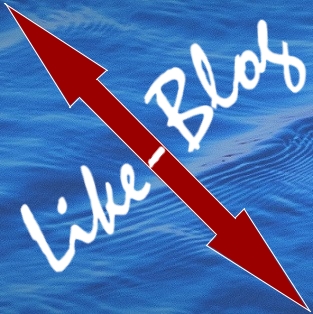Like-Blog
Presenting you the most interesting translation solutions

Why Like-Blog? Now, first of all, this blog is a blog that you should like (and read regularly) – at least, if you are interested in translation. Then, the topic discussed here is one in which the meaningful likeness between a text and its translation in the language pair English-German plays a key role. On this page, I will take a close look at some interesting translation solutions that I have come across in the course of my work as a translator and translation scholar.
A translation solution is only as good as the arguments that support it. This means that any translation criticism, whether positive or negative, needs to be justified. The quality of a translation solution shows only when we compare it to other possible translation solutions in a given translation situation. Therefore, a translation critic should not only say why a translation solution is bad, but also demonstrate what a better solution might look like. I will try to stick to these principles of translation criticism. So if you have any questions regarding my line of argument or if you disagree, please, let me know your opinion by phone at +49 4171 6086525 or by e-mail to bittner@businessenglish-hamburg.de. So much for the introduction. I hope you’ll enjoy reading this blog!
Monks and monasteries (July 2023)
In “The Tradegy of the Himalayas” (Time.com, 4 December 2009), Bryan Walsh writes: “Young Buddhist monks in training carry tanks of water to the towering monasteries poised in cut-rock valleys.”
The translator wrote: “Junge buddhistische Mönche in der Ausbildung tragen volle Wasserbehälter zu turmhohen in felsigen Tälern verharrenden Klöstern.” The problem in this translation will be discussed against the backdrop of basic considerations regarding translation methods.
Translation is undoubtedly easiest when a source sentence can be translated word for word into the target language. If this is not possible, special translation techniques are used which enable the translator to find a target language equivalent to the source sentence. Probably the most elegant translation technique is visualisation. This involves transferring what is described in the source text into a picture, which is then described in the target language. In this way, translation can take place almost completely detached from the individual words of a source sentence.
In the above example, the participle “poised” is probably the most difficult word to be translated. The rendering “verharrenden” doesn’t work because the verb “verharren” implies that something can move by itself. The picture conveyed in the source sentence shows monasteries built under difficult soil conditions on scarce rocky ground – in other words, poised or balanced. If we translate this picture into German, we can dispense with a rendering of the participle “poised”. Such a zero-translation might run: ... zu hoch aufragenden Klöstern in felsigen Tälern.
PS: Using a zero-translation in such cases is advisable also because this kind of participial construction is much rarer in German than in English.
